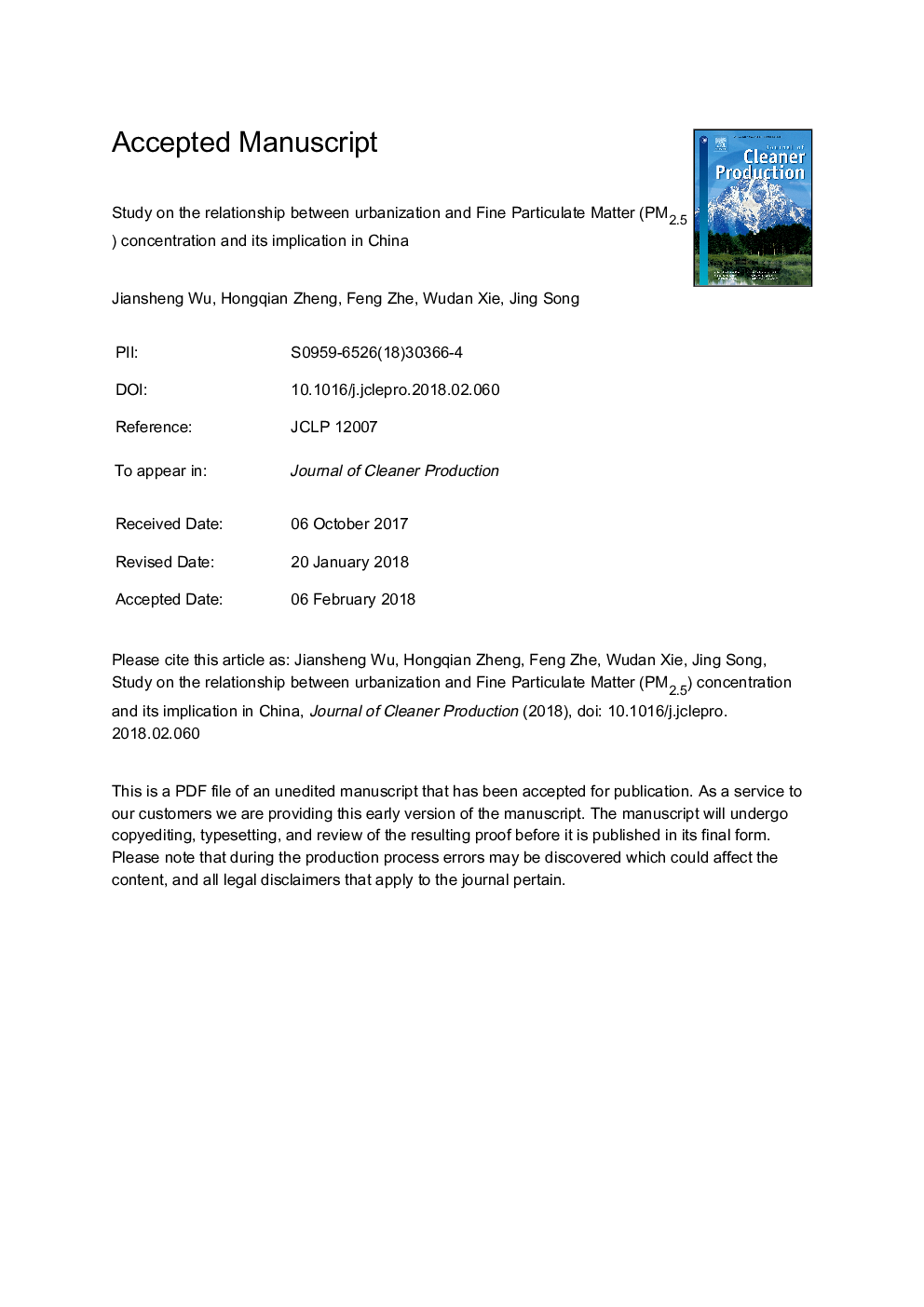| Article ID | Journal | Published Year | Pages | File Type |
|---|---|---|---|---|
| 8097478 | Journal of Cleaner Production | 2018 | 31 Pages |
Abstract
Correlation between urbanization and environmental pollution is a major focus of study in geography, environmental science, and economics. Particulate matter is the primary pollutant of air pollution and made up of heavy metal, organic carbon and aromatic hydrocarbon and complicated chemicals. PM2.5 are fine particulate matter with diameters that are less than 2.5â¯Î¼m. The aim of this study on the relationship between urbanization and PM2.5 concentration is to achieve a win-win situation of both economic development and environmental protection, which is of great significance to sustainable development in China. This paper uses PM2.5 remote sensing data and statistical yearbook data from 2000 to 2011 to build four panel data models within the urbanization-PM2.5 concentration Environmental Kuznets Curve (EKC) framework. The goal is to find out the correlations between PM2.5 concentration and economic urbanization, population urbanization, and space urbanization. Furthermore, scenario simulations are set to predict when China will reach inflection point and achieve its target concentration. Results show that the relationship between economic urbanization and PM2.5 concentration is an inverted N-shaped or inverted U-shaped curve. Most cities in East China have reached the second inflection point of inverted-N curve to step into the win-win stage while many cities in Middle China still need 10-15 years to arrive at the inflection point of the inverted-U curve. Therefore, China is under great pressure to prevent PM2.5 pollution and pursue more targeted PM2.5-reduction policies for air quality improvement.
Related Topics
Physical Sciences and Engineering
Energy
Renewable Energy, Sustainability and the Environment
Authors
Jiansheng Wu, Hongqian Zheng, Feng Zhe, Wudan Xie, Jing Song,
